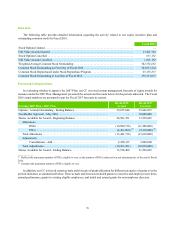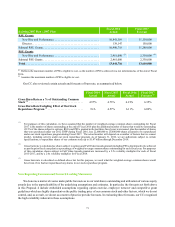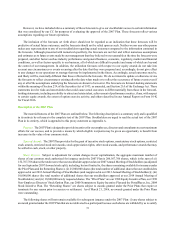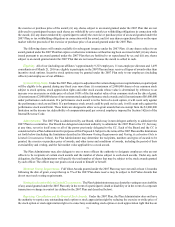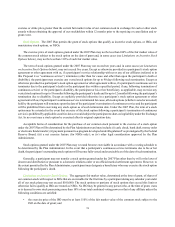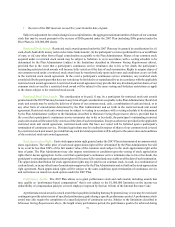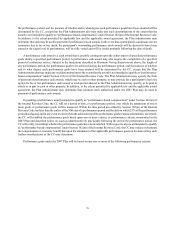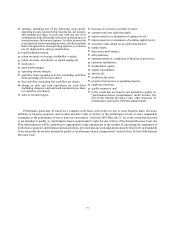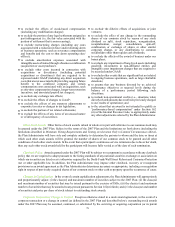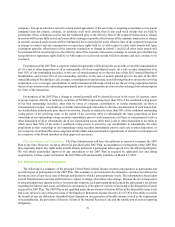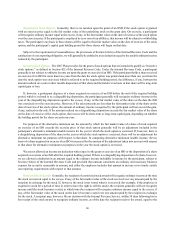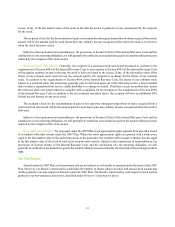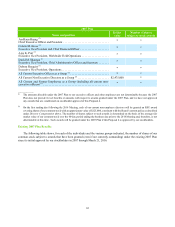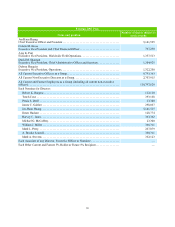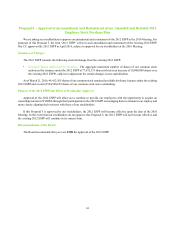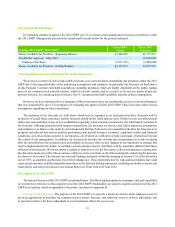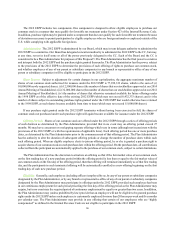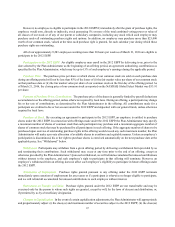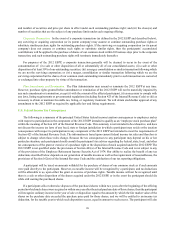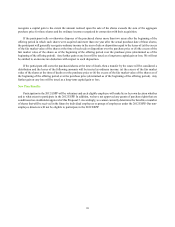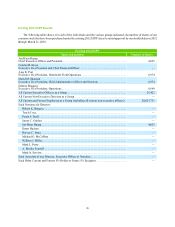NVIDIA 2016 Annual Report Download - page 98
Download and view the complete annual report
Please find page 98 of the 2016 NVIDIA annual report below. You can navigate through the pages in the report by either clicking on the pages listed below, or by using the keyword search tool below to find specific information within the annual report.80
Nonstatutory Stock Options. Generally, there is no taxation upon the grant of an NSO if the stock option is granted
with an exercise price equal to the fair market value of the underlying stock on the grant date. On exercise, a participant
will recognize ordinary income equal to the excess, if any, of the fair market value on the date of exercise of the stock option
over the exercise price. If the participant is employed by us or one of our affiliates, that income will be subject to withholding
taxes. The participant’s tax basis in those shares will be equal to their fair market value on the date of exercise of the stock
option, and the participant’s capital gain holding period for those shares will begin on that date.
Subject to the requirement of reasonableness, the provisions of Section 162(m) of the Internal Revenue Code and the
satisfaction of a tax reporting obligation, we will generally be entitled to a tax deduction equal to the taxable ordinary income
realized by the participant.
Incentive Stock Options. The 2007 Plan provides for the grant of stock options that are intended to qualify as “incentive
stock options,” as defined in Section 422 of the Internal Revenue Code. Under the Internal Revenue Code, a participant
generally is not subject to ordinary income tax upon the grant or exercise of an ISO. If the participant holds a share received
on exercise of an ISO for more than two years from the date the stock option was granted and more than one year from the
date the stock option was exercised, which is referred to as the required holding period, the difference, if any, between the
amount realized on a sale or other taxable disposition of that share and the holder’s tax basis in that share will be long-term
capital gain or loss.
If, however, a participant disposes of a share acquired on exercise of an ISO before the end of the required holding
period, which is referred to as a disqualifying disposition, the participant generally will recognize ordinary income in the
year of the disqualifying disposition equal to the excess, if any, of the fair market value of the share on the date the ISO
was exercised over the exercise price. However, if the sales proceeds are less than the fair market value of the share on the
date of exercise of the stock option, the amount of ordinary income recognized by the participant will not exceed the gain,
if any, realized on the sale. If the amount realized on a disqualifying disposition exceeds the fair market value of the share
on the date of exercise of the stock option, that excess will be short-term or long-term capital gain, depending on whether
the holding period for the share exceeds one year.
For purposes of the alternative minimum tax, the amount by which the fair market value of a share of stock acquired
on exercise of an ISO exceeds the exercise price of that stock option generally will be an adjustment included in the
participant’s alternative minimum taxable income for the year in which the stock option is exercised. If, however, there is
a disqualifying disposition of the share in the year in which the stock option is exercised, there will be no adjustment for
alternative minimum tax purposes with respect to that share. In computing alternative minimum taxable income, the tax
basis of a share acquired on exercise of an ISO is increased by the amount of the adjustment taken into account with respect
to that share for alternative minimum tax purposes in the year the stock option is exercised.
We are not allowed an income tax deduction with respect to the grant or exercise of an ISO or the disposition of a share
acquired on exercise of an ISO after the required holding period. If there is a disqualifying disposition of a share, however,
we are allowed a deduction in an amount equal to the ordinary income includible in income by the participant, subject to
Section 162(m) of the Internal Revenue Code and provided that amount constitutes an ordinary and necessary business
expense for us and is reasonable in amount, and either the employee includes that amount in income or we timely satisfy
our reporting requirements with respect to that amount.
Restricted Stock Awards. Generally, the recipient of a restricted stock award will recognize ordinary income at the time
the stock is received equal to the excess, if any, of the fair market value of the stock received over any amount paid by the
recipient in exchange for the stock. If, however, the stock is not vested when it is received (for example, if the employee is
required to work for a period of time in order to have the right to sell the stock), the recipient generally will not recognize
income until the stock becomes vested, at which time the recipient will recognize ordinary income equal to the excess, if
any, of the fair market value of the stock on the date it becomes vested over any amount paid by the recipient in exchange
for the stock. A recipient may, however, file an election with the Internal Revenue Service, within 30 days following his or
her receipt of the stock award, to recognize ordinary income, as of the date the recipient receives the award, equal to the


